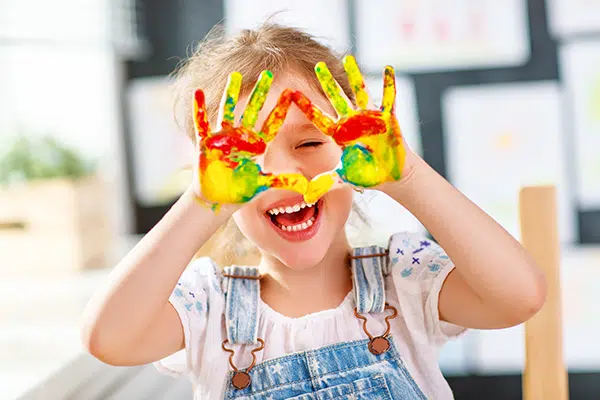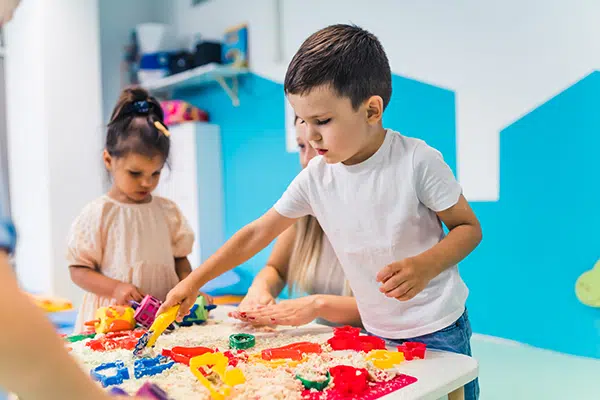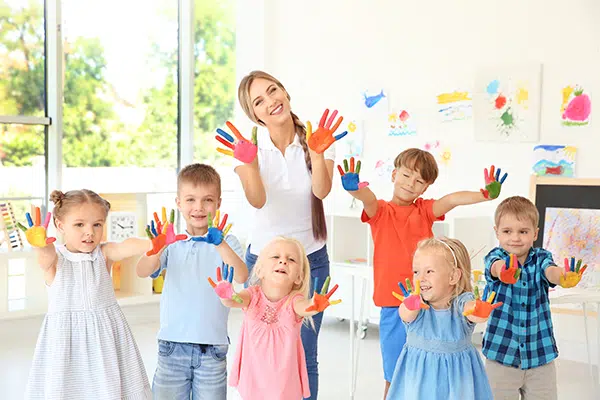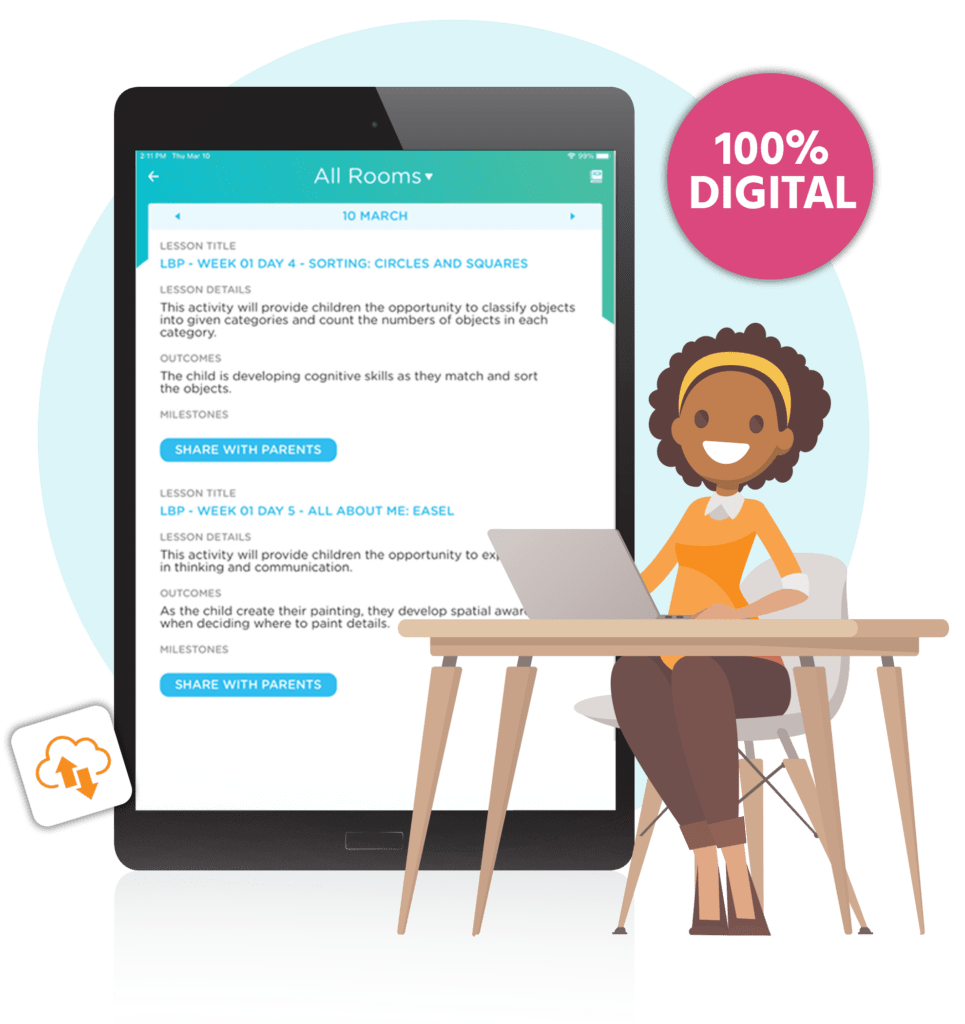Process art is an approach that has gained significant recognition for its benefits on young minds in fostering creativity and self-expression. Let’s explore more about process art and effective methods for teaching process art in a preschool setting!
What is Process Art?
Process art is an artistic approach that emphasizes the creative journey rather than the final product. In this method, the focus is on the exploration of materials, techniques and self expression, allowing children to engage with the artistic process without the pressure of creating a specific outcome. The emphasis is on the experience, experimentation and individual interpretation.
Process art that is child-directed, choice-driven and celebrates the experience of discovery! In process art, the final product is always unique and the focus lies in the creation of the work, not the outcome, according to TinkerLab.

Benefits of Process Art in the Preschool Classroom
Encourages Creativity: Process art encourages children to think outside the box, fostering a sense of creativity and imagination.
Builds Confidence: There is no right or wrong in process art, so children gain confidence in their abilities and ideas.
Enhances Fine Motor Skills: Engaging in various art activities helps develop fine motor skills as children manipulate different materials.
Promotes Decision-Making: Children make choices throughout the creative process, promoting decision-making skills and autonomy.
Fosters Emotional Expression: Process art provides a medium for children to express emotions and thoughts that they may find challenging to communicate verbally.
Process Art Activities for Preschoolers

Bubble Wrap Printing: Dip bubble wrap in paint and press it onto paper for a textured masterpiece.
Nature Collages: Collect leaves, sticks, and flowers to create beautiful collages.
Sensory Painting: Add different textures to paint, such as sand or rice, for a multisensory experience.
String Art: Dip strings in paint and press them onto paper for unique patterns and designs.
Seasonal Process Art Activities
Spring Process Art: Create flower gardens with fingerprint petals.
Fall Process Art: Halloween is a great time to incorporate process art! Craft spooky creatures using various materials like tissue paper and googly eyes.
Winter Process Art: Construct snowflakes using glue and salt for a frosty effect.
Summer Process Art: Homemade sidewalk chalk is a great way to spend time outside and let preschoolers draw with chalk they made! Check out this easy recipe to make sidewalk chalk from Happy Toddler Playtime.
Classroom Materials for Process Art

Here’s a list of what you’ll need for your preschoolers to really take advantage of process art:
- Paints: Watercolors, tempera, and finger paints provide a variety of textures and colors.
- Collage Materials: Magazines, fabric, and recycled materials for diverse creative possibilities.
- Textured Tools: Brushes, sponges, and unconventional tools for different tactile experiences.
- Playdough: Excellent for molding and sculpting.
Process Art vs. Product Art
So what’s the difference?
Process art celebrates the journey, while product art emphasizes the final creation. Both are valuable, but process art is particularly crucial for preschoolers’ development.
How Do You Teach Process Art in a Preschool Classroom?
Provide Freedom: Allow children to choose their materials and explore without strict guidelines.
Encourage Reflection: Discuss their creations, asking about choices made during the process.
Display Art Proudly: Showcase their work, emphasizing the uniqueness of each piece.
How Curriculum Designed for Young Learners Can Help!

Process art is a powerful tool for nurturing creativity and self-expression in preschoolers. By embracing the journey of creation, you can provide an enriching environment that fosters a lifelong love for art and learning!
Process art is just one way that your center can help preschoolers learn and develop valuable skills. It’s also important to include a digital curriculum into your classrooms!
Procare Early Learning powered by Learning Beyond Paper is an all-digital early childhood curriculum specifically designed to meet the unique needs of educating children from infancy through pre-kindergarten.
The curriculum is embedded into Procare, making it easier and less time-consuming for busy teachers and administrators to provide high-quality education.
With Procare Early Learning powered by Learning Beyond Paper, child care centers can:
- Equip teachers with state-of-the-art online curriculum at their fingertips
- Dramatically reduce the amount of time spent on lesson planning each week
- Offer children a high-quality, developmentally appropriate curriculum
- Save money with this cost-efficient solution that’s integrated with Procare
This curriculum can be used in ALL child care center classrooms, with 52 weeks of lesson plans and more than 4,000 daily activities for infants, toddlers, preschoolers and pre-kindergarteners. Learning areas include STEAM, language and literacy, physical development, cognitive, music and movement as well as interactive reading. Plus, teachers get tips and tools they can use in real time!
Procare is the only solution that can deliver the entire early childhood education ecosystem — lesson planning, lesson delivery within the classroom as well as assessment and parent engagement. Being able to do all of these with one platform simplifies classroom management and planning!
How much time and money could your child care center save using a digital curriculum designed for young learners? Enter your number of staff, number of students and type of program into our online calculator to learn your potential savings!



